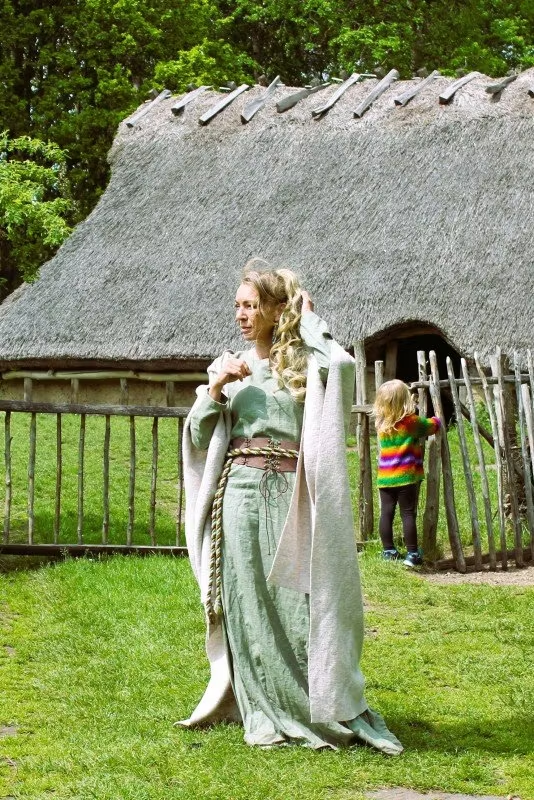Varukorg
Rabatt:
0,00 SEK
Fallorka Design and Company |10/08, 2025

Making fabric in Viking Age
The Vikings made cloth from wool from sheep. The Vikings also made cloth from the fibers in the stems of a flower called flax.
Flax is a rather inconspicuous blue flower about 80-100 centimeters high. What makes flax special is that the stems contain large amounts of fiber. Those fibers can be made into fabric.
The stems are treated rather harshly so that everything except the fibers is cleaned away. The fibers are then treated so that they become soft and pleasant to the touch, before they are woven into fabric.
1. The stems were collected just before the seeds ripened. 2. The flowers were uprooted.
3. The flowers were dried, often in bunches in the fields.
4. Seed houses and flower remains were scraped off with a coarse comb.
The stems were placed in water for some time so that the stems began to rot. It's called rooting the stems. It smells very bad. After the fermentation, the stems were dried again.
5. The stems were broken, broken by being pulled over an edge many times.
6. Then the stalks were shaken. The stems were struck with a wooden tool so that the rotten stem parts fell off and only the fibers remained.
7.Finally, the fibers were crocheted from the stems by pulling back and forth over a comb with sharp iron tips. A heckler. The hacking removed the last remaining stalks.
The end result was a tangle of fine fibers, like blond human hair. They could then be put into a dragonfly and become thread and yarn in the same way as wool from sheep.